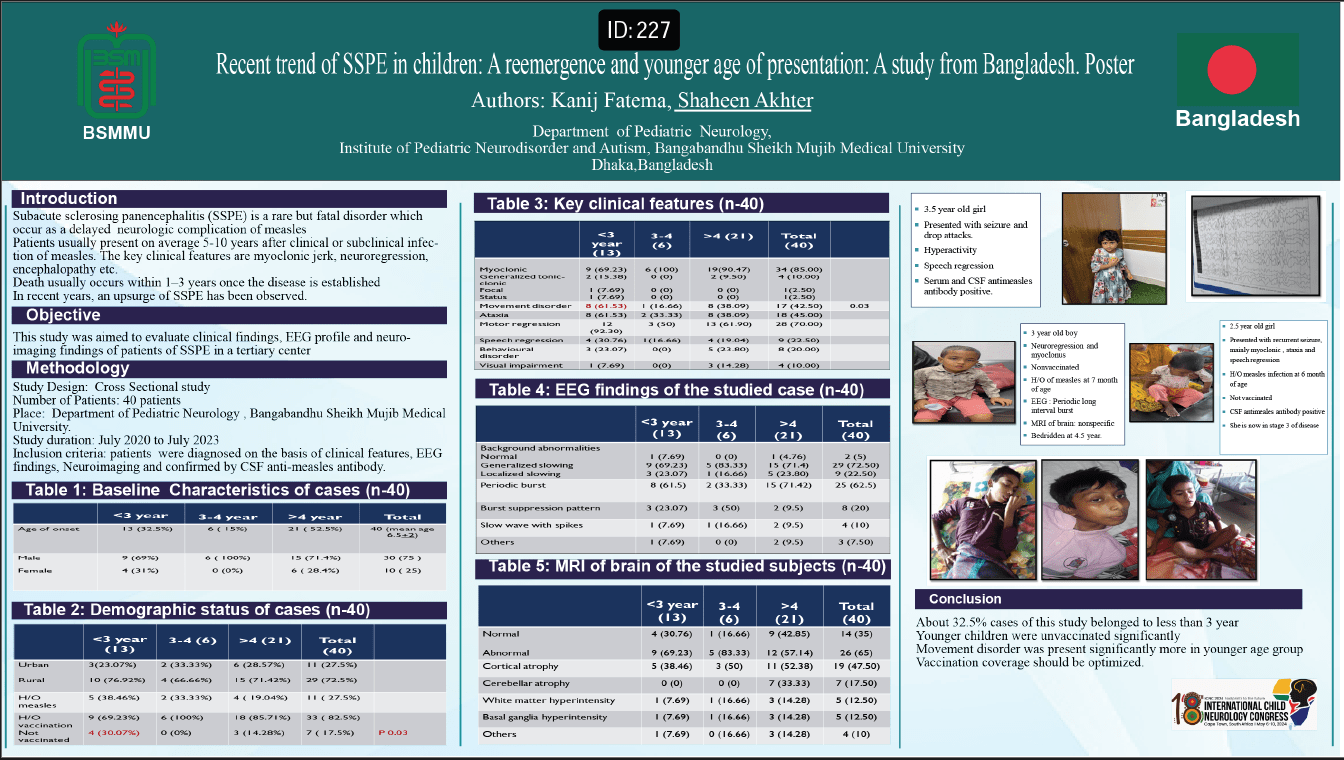Recent Trend Of SSPE In Children: A Reemergence And Younger Age Of Presentation: A Study From Bangladesh.
Background: Subacute sclerosing panencephalitis (SSPE) is a rare but fatal disorder which occur as a delayed neurologic complication of measles. Patients usually present on average 5-10 years of after clinical or subclinical infection of measles. The key clinical features are myoclonic jerk, neuroregression, encephalopathy etc. Death usually occurs within 1–3 years once the disease is established . In the last 3 years, an upsurge of SSPE has been observed. Method: This study was done from July 2020 to July 2023. Thirty two patients with SSPE diagnosed on the basis of clinical features, EEG, neuroimaging and CSF antimeasles antibody were included in this study. Result: Age range of the cases were 2.5 year -11 year, age of onset range was15 months – 9 year. Around 40% patients of this study present in less than 3 years of age. A male predominance was found. The key clinical features were myoclonic jerk and neuroregression. Long periodic complexes in EEG was the predominant EEG finding, MRI was mostly nonspecific. Conclusion: This study will highlight the recent emergence of SSPE in the post-COVID era which is a concern in the neighboring countries like India and Bangladesh. Moreover, it will also give a light to the early onset of SSPE mostly in toddlers.
Kanij Fatema
Bangabandhu Sheikh Mujib Medical University
Bangladesh
Kazi Ashraful Islam
Bangabandhu Sheikh Mujib Medical University
Bangladesh
Shaheen Akhter
Bangabandhu Sheikh Mujib Medical University
Bangladesh
Mohammad Mizanur Rahman
Bangabandhu Sheikh Mujib Medical University
Bangladesh
Faruk Omar
Bangabandhu Sheikh Mujib Medical University
Bangladesh
